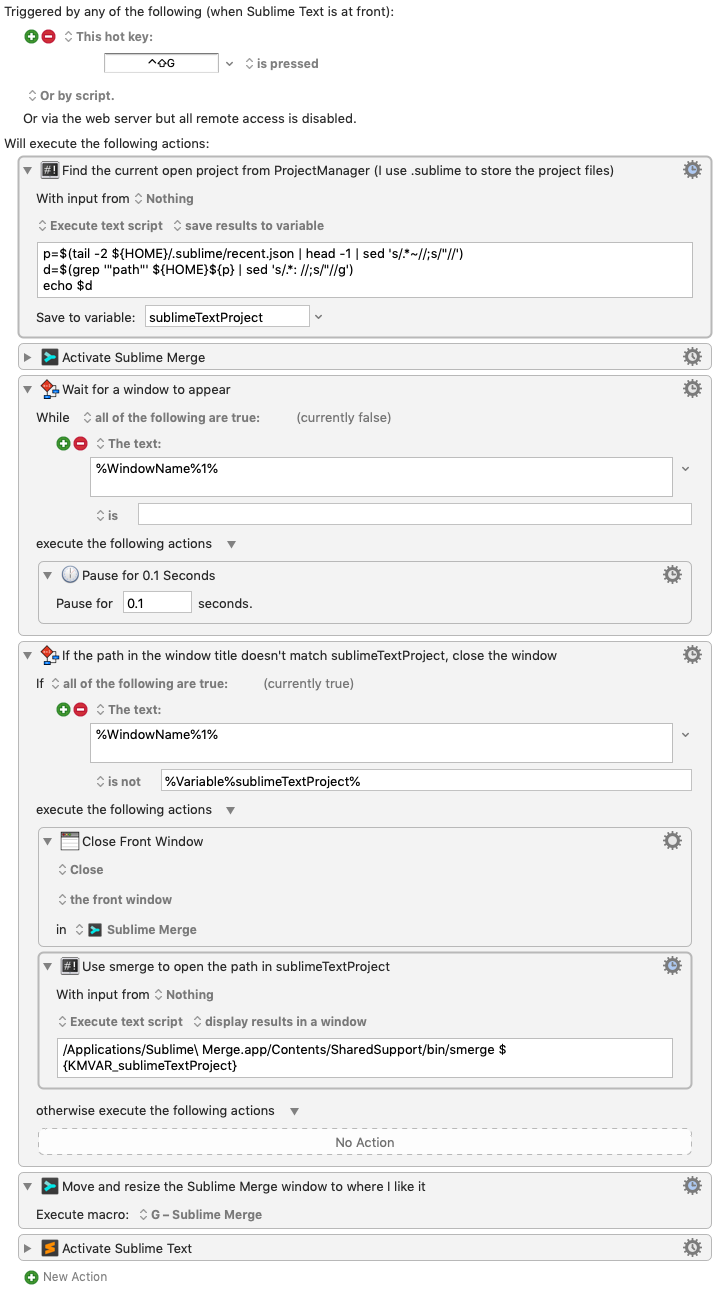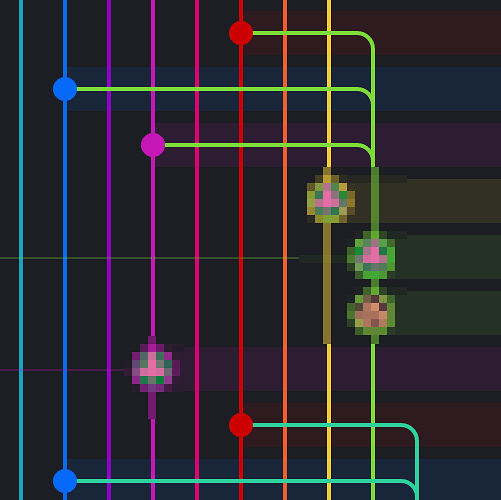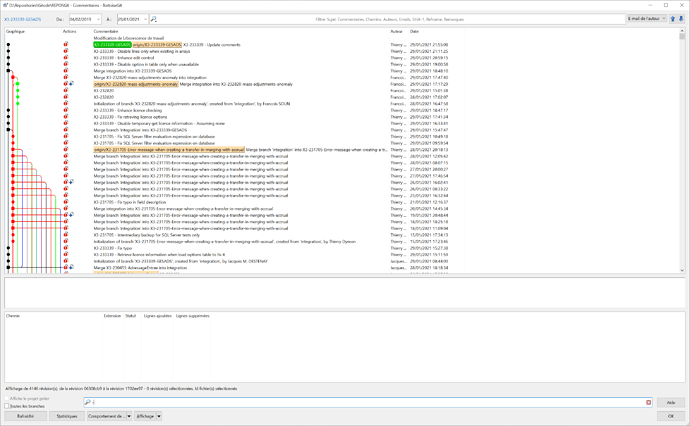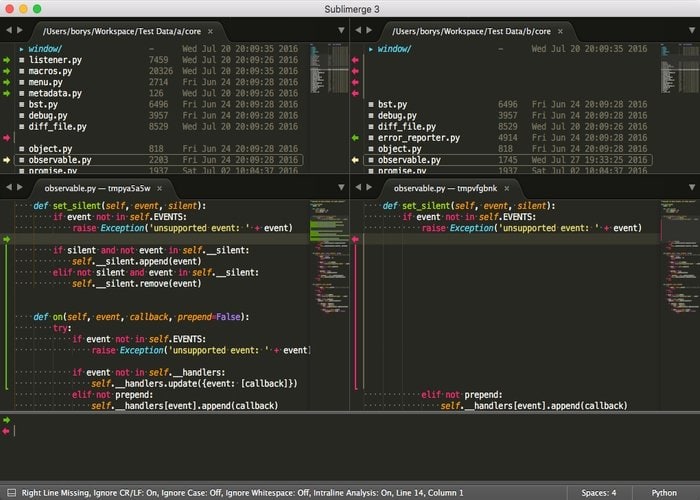

- #Sublime merge cmdlone install
- #Sublime merge cmdlone update
- #Sublime merge cmdlone code
- #Sublime merge cmdlone plus
- #Sublime merge cmdlone windows
Regarding VSCode, you can use the Calva plugin, to install it you just run VSCode and the go to the Extension market place, search for Calva and then install it, you’re good to go. In the Plugins window type Cursive and then install it, finally restart the IDE, you’ll be good to go for the next section. Type Shift Shift then type Plugins then Enter or you can go to File > Settings.
#Sublime merge cmdlone code
If you don’t have IntelliJ installed, just grab a version, the community version is free and works fine with Cursive, otherwise just follow the steps for VS Code below. Since I’m from the Java world, I’m used to IntelliJ and the Cursive plugin for Clojure development. This is why I will cover both IntelliJ and VSCode in this guide. Obviously I cannot explain how every IDE / text editor works with Clojure, I’m not a Emacs or Atom user, I do use mainly IntelliJ, but I’ve used VSCode extensively also.Īs with the Linux distribution, you can chose to use the editor you like most, like Emacs, or Vim + fireplace or Vim + vim-iced, or Atom + Chlorine, or Sublime or any other you can find. Now that Clojure is installed, let’s write some code using your IDE and the REPL integration. Leiningen 2.9.1 on Java 11.0.5 OpenJDK 64-Bit Server VM IDE
#Sublime merge cmdlone update
MacOSįirst update your brew, then install Clojure CLI, and verify that it works: But for your project just stick with one of the alternative, don’t try to mix the two.Įdit: I’ve just found this article What are the clojure tools which goes into more details regarding how the Clojure CLI & ps actually work, so read it later if you need to know more about it. Nevertheless it helps knowing how Leiningen works because you’ll find a lot of projects using it. In this guide I will cover ps, and we’ll also install Leiningen so that you have it on your system when you need to, and because I’ve never used Boot myself even if I’ve heard good things about it, you can try it if you want.įrom my point of view you should start with ps because I feel like the community is really invested in it right now, and they are building some cool stuff. I agree with you, humble imaginary visitor. Hey I’m new to Clojure and you want me to make a choice? Seriously? There are different Clojure tools that you can use to build your project. OpenJDK 64-Bit Server VM (build 11.0.5+10-post-Ubuntu-0ubuntu1.118.04, mixed mode, sharing ) Clojure Tooling I also tried changing "bundled" to "system" and even "wsl git", but that did not work.OpenJDK Runtime Environment (build 11.0.5+10-post-Ubuntu-0ubuntu1.118.04 ) I'd guess that is confusing the "bundled" git that Sublime Merge is using. It appears that all of the false positives have the executable bit set within WSL2. I will have to stop using Sublime Merge until I can figure out a solution. I have tinkered with whitespace diff settings, but have not been able to resolve this.

Yesterday, when I upgraded from build 2074 to build 2077 a new quirk was introduced that makes this workflow untenable because there are ~150 false positive "pending changes" that display in the summary view despite there being zero changes to display. ctrl+shift+h is useful to update Sublime Merge with the latest changes, since automatic updating doesn't work. I can quickly look at the changes I have pending and then go back to the command line to write commits. This setup has been working nicely for a "read only" view of the repository. This allows me to start Sublime Merge from within my bash shell in Terminator with smerge.
#Sublime merge cmdlone windows
No windows spawn or errors are emitted, just silence.

However, when I double-click the icon or when I manually copy and paste that command into a cmd.exe prompt, nothing happens. This shortcut wraps the command C:\Windows\System32\wslg.exe ~ -d Ubuntu /opt/sublime_merge/sublime_merge. This seemed to work and a new double-clickable icon in C:\Users\matt\AppData\Roaming\Microsoft\Windows\Start Menu\Programs\Ubuntu magically showed up after the install. In an attempt to setup "write access" to the repos via Sublime Merge, I tried installing Sublime Merge into WSL2 via sudo apt-get install sublime-merge. My workaround was to manually execute the git commands in the WSL terminal. Trying to execute git commands fails, as discussed above.

#Sublime merge cmdlone plus
This plus the ctrl+shift+H shortcut has given me a nice visual "read only" experience.


 0 kommentar(er)
0 kommentar(er)
